Captivating JJK Manga Panels to Enjoy
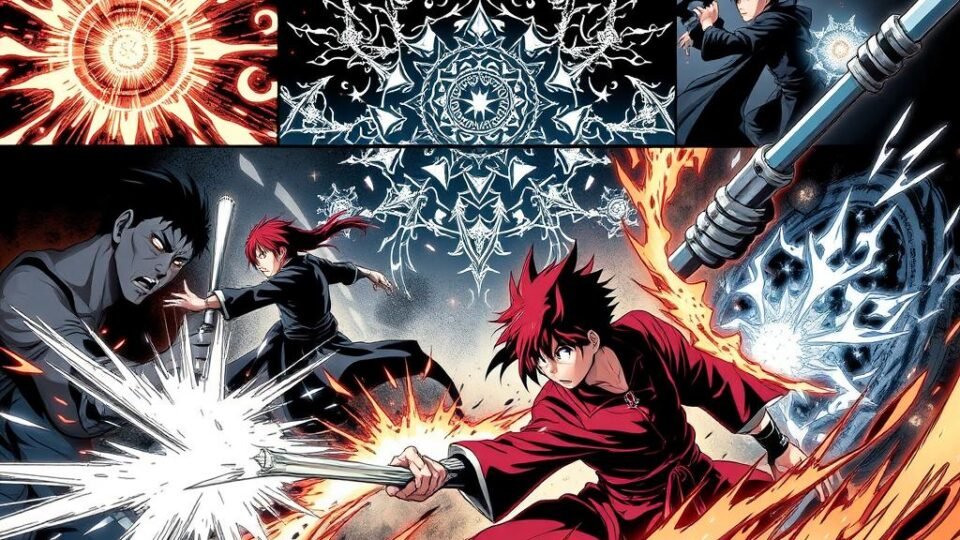
Jujutsu Kaisen has become a touchstone for fans and readers thanks to its blend of striking art and charged storytelling. Gege Akutami’s series sold over 90 million copies since 2018, and its conclusion plus the December 25, 2024 epilogue give many pages new meaning.
This short guide curates standout manga panels and sequences that pushed the story into the mainstream. Each example shows how composition and rhythm turn fight choreography into unforgettable moments.
The appeal goes beyond looks: a single panel can advance character arcs and themes while delivering immediate visual impact that lingers after you turn the page.
We focus on officially published moments and note chapters so readers can revisit full spreads. Expect quiet frames next to explosive layouts; some scenes read chaotic at first, but the best choices reveal clear intent and emotion.
Why these panels matter right now for Jujutsu Kaisen readers in the United States
With the finale behind it, the work’s most striking frames are getting fresh attention from U.S. fans. The 2024 conclusion sent many readers back through chapters to connect loose threads and spot foreshadowing that now reads differently.
Stateside conversations also follow the ongoing anime run. Fans compare how the adaptation stages key moments, how pacing shifts, and which visual choices made the cut for TV.
Social platforms — from Reddit threads to TikTok edits — often center around a single frame. Those posts widen the scene’s cultural reach and make specific images part of the community’s shared language.
These visuals act like memory hooks. A single layout can jog recall of an arc or an emotional beat without rereading whole volumes. That makes iconic layouts useful for readers and newcomers alike.
Our picks highlight work that changed the conversation — pages that introduced bold visual language or simplified complex action. In the U.S., that impact is amplified by anime buzz, convention culture, and collectible art interest.
jjk manga panels: a curated gallery of unforgettable moments
Here we gather the spreads that turn action into storytelling, each frame a focused lesson in visual drama.
Gojo’s 200% Hollow Purple collides with Sukuna’s arrogance — Chapter 223
Chapter 223 is pure force. Hollow Purple at 200% reads like a tidal wave across the page.
The wide layout sells scale while close inserts show Sukuna taking blunt damage to his arms. That contrast makes the hit feel monumental.
Gojo drags Yuji into the fray to mock Jogo — Chapter 15
In Chapter 15, a compact sequence captures swagger and lesson. Gojo pulls Yuji Itadori into the domain to humiliate Jogo and teach by example.
The composition frames mentorship as performance — a confident sorcerer shaping a pupil through spectacle.
Kento Nanami hits “Overtime” against Mahito — Chapter 23
Chapter 23 flips tone with a tight reveal: Nanami’s “overtime” is shown in a few sharp panels that raise tension and stakes.
Suguru Geto’s martial mastery vs a shikigami user — Chapter 68
Chapter 68 highlights Geto beyond summoning. The fight uses beat-by-beat choreography and angled poses to show timing and intent.
Gojo can’t kill his best friend, Geto — Chapter 78
Chapter 78 is a study in restraint. Negative space and close facial work make Gojo’s hesitation feel like a wound.
“Gege Akutami calibrates silence and size so impact beats land without crowding the page.”
- Scale shots show destructive power and cursed energy.
- Close-ups compress emotion and moral conflict.
- Sequenced strips reveal choreography and mechanics.
Each chapter note guides you straight to the specific spread that defines the moment, so you can revisit the fight or the emotional beat in context.
Shibuya Incident panels that defined the series’ emotional core
In the Shibuya Incident, layout choices turn citywide chaos into a tight, emotional crucible. The arc uses rhythm and restraint to make loss feel unavoidable and intimate.
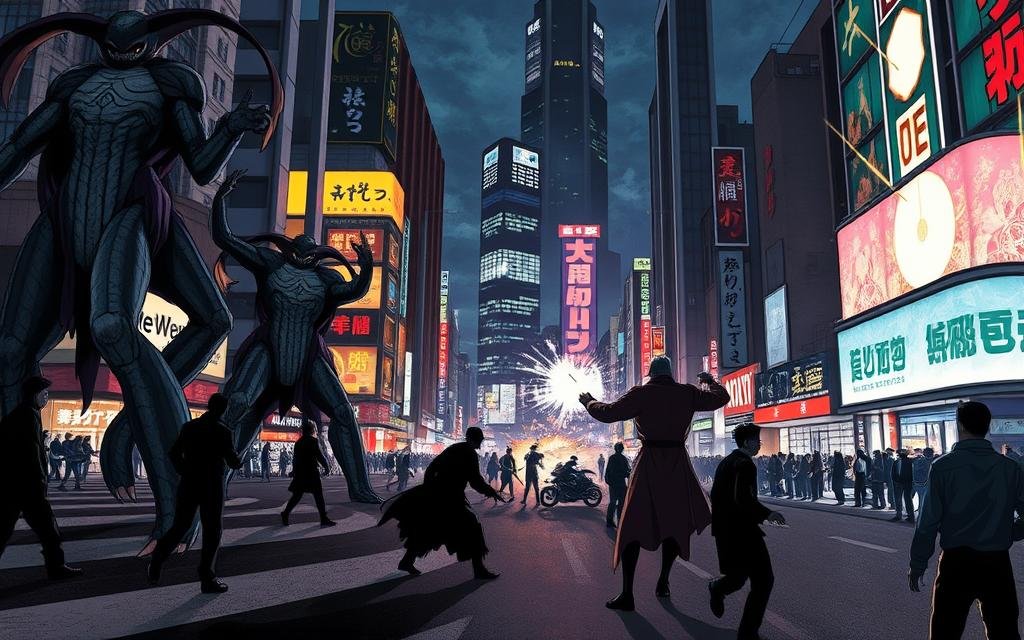
Mahito flees like a rabbit from Yuji’s relentless pursuit — Chapter 132
Chapter 132 stages Mahito’s scramble as prey-versus-predator imagery. Tight shot sequences make his flight read like a hunted rabbit while the pursuer becomes a looming force.
The panels flip who holds power in a few beats, trading calm for raw panic.
Yuji’s harrowing collapse amid devastation — a minimalist gut punch
Yuji Itadori’s silent fall uses empty space and spare dialogue. One small page can carry the weight of mass death without shouting.
The restraint here magnifies the emotions — close frames, long pauses, and a focus on a single body turn sorrow into a physical ache.
Sukuna’s chilling smirk as a visual thesis on terror
Repeated close-ups of Sukuna’s grin act like a recurring alarm. A single panel motif distills dread and makes the threat feel constant.
Alternating wide destruction shots with intimate facial panels creates a rhythm that mirrors shock, denial, and grim acceptance.
“Silence on the page often speaks louder than any explosion.”
- Off-kilter angles and broken gutters add disorientation.
- Placement of bodies and debris guides the eye to key details.
- Visual echoes repeat framing to signal callbacks or reversals.
Gojo’s Past arc: elegant minimalism and world-shifting power
Elegant restraint and sudden scale shifts make Gojo’s backstory a visual turning point. The arc positions lineage, talent, and cost in scenes that read like quiet examinations before a storm.
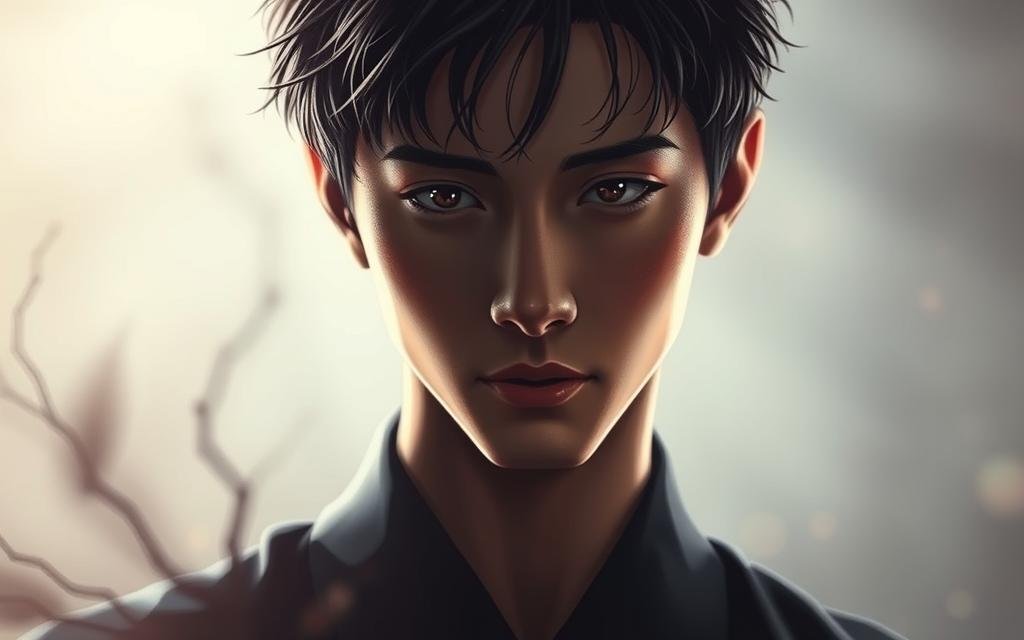
Gojo awakens, heals with reverse cursed energy, and ascends — Chapter 75
Chapter 75 locks a single panel into memory: a midair twist, instant regeneration via reverse cursed energy, and a luminous compositional glow. That panel signals a new apex of power and mastery of Hollow Purple.
Hidden Inventory’s quiet frames that amplify loss and resolve
Hidden Inventory uses small, spare frames and sparse dialogue to let tension simmer. Subtle beats focus on faces, gloved hands, and the distance between figures to outline duty and grief.
Gege Akutami blends technique exposition with visual storytelling so increases in strength feel earned. The staging of techniques follows a clear rhythm: setup, compression, release, and aftermath. This makes each panel readable and dramatic.
“Fewer lines, bigger feelings — the arc’s minimal style makes sudden full-page spreads land harder.”
- Symmetry and negative space telegraph loss before it hits.
- Eye and posture shifts mark the change from hesitation to calm command.
- Recurring motifs—hands, eyes, distance—track shifting loyalties.
The Showdown and Culling Game era: power, technique, and consequence
Power meets judgment in sequences that treat each exchange as a verdict.
Chapter 253 frames Maki Zenin’s face-off with Sukuna as a study in precision over brute force. Her strikes read with surgical clarity: clean lines, sudden angles, and tempo shifts that make each read feel like a new rule being tested.
The composition favors readable motion. Close inserts show hands and grips, wide beats show impact, and gutters tighten when timing matters. This makes the fight feel logical and thrilling at once.
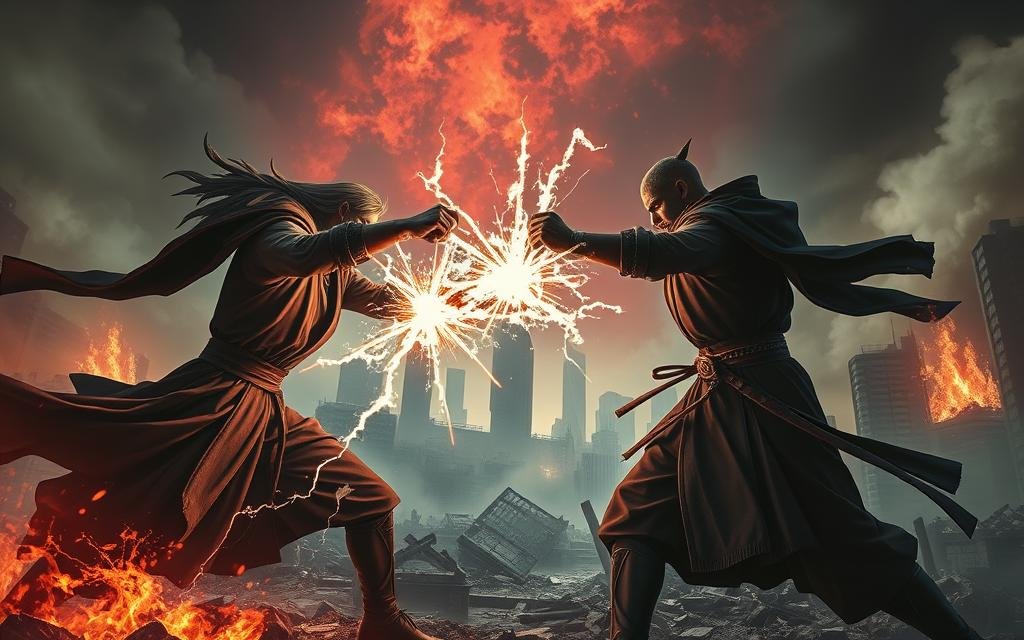
Maki challenges Sukuna’s supremacy — Chapter 253
Maki forces Sukuna to admit she excites him more than familiar opponents. The paneling highlights her physicality and intent. Faces, weapons, and arcs shift focus to reveal feints and follow-through.
Yuji faces Judgeman’s “Death Penalty” — Chapter 165
Chapter 165 drops the Judgeman ruling like a gavel strike. Stark text treatment and empty frames strip noise until the moment hits hard. The culling game here uses tight gutters and quick cuts to heighten rule-bound tension.
“These pages balance spectacle with stakes, making each moment feel earned.”
- Energy modulation: ebb and flow primes readers for counterattacks.
- Background density: clutter rises with chaos; spare space marks decisive blows.
- Narrative signposts: a single panel can mark a shift in advantage or consequence.
What makes JJK’s panel work special: art, technique, and impact
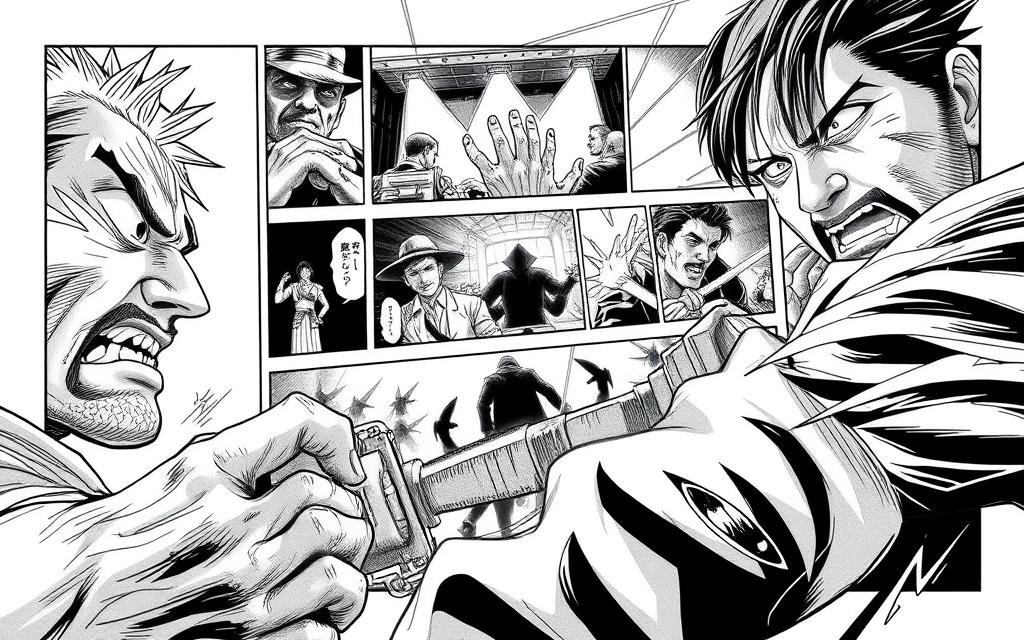
Dynamic action layouts use motion lines and layered perspectives to sell speed without losing clarity. Domain battles are storyboarded like rules in motion: setup, boundary, activation, and failure. That visual sequence helps readers understand stakes at a glance.
Expressive close-ups that carry grief, fury, and resolve
Sometimes one panel replaces a paragraph. A face, a hand, or a cut of empty space can anchor an entire page’s emotion. These moments make silence feel loud and let readers fill in sound and weight.
Visual symbolism and negative space
Recurring motifs—smiles, blood-slicked hands, and empty rooms—act as shorthand for dread and consequence. Irregular shapes appear during chaos and then return to clean grids for reflection. That shift in style guides tone.
Minimal text, maximal impact
Words are spare so the art can breathe. Pacing becomes cinematic; a turn of the page is a micro-cliffhanger. Study the techniques and watch how close-ups and wide shots alternate to keep your eye on the exact emotional landing point.
- Artist choices reward rereads: small background cues foreshadow reversals.
- Look for examples of silence used as a storytelling tool; it often holds the heaviest meaning.
Best arcs to revisit for jaw-dropping manga panels
Some arcs act like concentrated showcases of technique, where one spread can change how you read the whole work. These three sequences highlight the series’ greatest visual ambitions and reward close study.
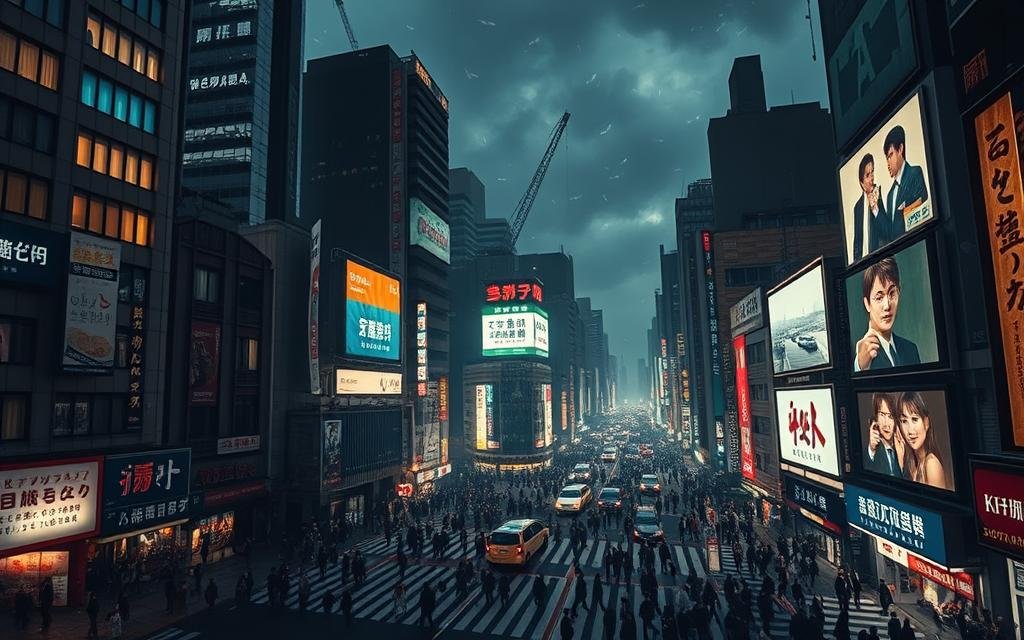
Shibuya Incident
Why revisit: relentless pacing and devastating reversals turn a city into a maze of terror.
The arc’s dense layouts use broken gutters and angled frames to keep readers off-balance.
Gojo’s Past
Why revisit: elegant minimalism and mythmaking let quiet frames carry seismic shifts.
Small panels emphasize relationships and cost, so revelation lands harder.
Culling Game
Why revisit: experimental layouts translate rules and penalties into readable tension.
The era tests new techniques, making every technique reveal feel like a rule change.
Revisiting these arcs together charts the creator’s growth: from grounded horror to polished spectacle.
| Arc | Visual Strength | Best Use | Fan Value |
|---|---|---|---|
| Shibuya Incident | Dense city-scale layouts | Conveying dread and sudden loss | High — iconic sequences for discussion |
| Gojo’s Past | Minimal frames, emotional beats | Amplifying revelation and character cost | High — great for study of craft |
| Culling Game | Rule-driven experiments | Translating mechanics into visual rules | High — shows technical evolution |
Tip for fans: save standout pages as reference points to compare awakenings, defeats, and vows across the world of this work.
Where to read official Jujutsu Kaisen and support the artist
Supporting official releases preserves high-quality scans and helps the creative team behind every page.
VIZ’s Official Shonen Jump is the best starting point for U.S. readers who want legal access and reliable delivery. The platform keeps page order and image quality intact so dramatic beats land as intended.
VIZ’s Official Shonen Jump: catch the series legally
On Shonen Jump you can read the jujutsu kaisen manga chapters alongside hits like Chainsaw Man and Kaiju No. 8. That makes it easy for fans to jump between titles and discover new favorites.
Why choose the official option: translations are cleared and precise, which matters during complex action and technique moments. Subscribing sustains the creators, editors, and translators who make the work possible.
Re-read your highlighted sequences on the platform to study composition at full resolution. Bookmark favorite spreads for quick reference when discussing story beats or comparing the anime to source panels.
![]()
Official access keeps the community aligned on timing and content, and it is the best way to honor the effort behind every carefully crafted page.
How JJK’s panels fueled global fandom and anime adaptation buzz
A single striking page often seeds viral threads and shapes how the anime adapts key moments.
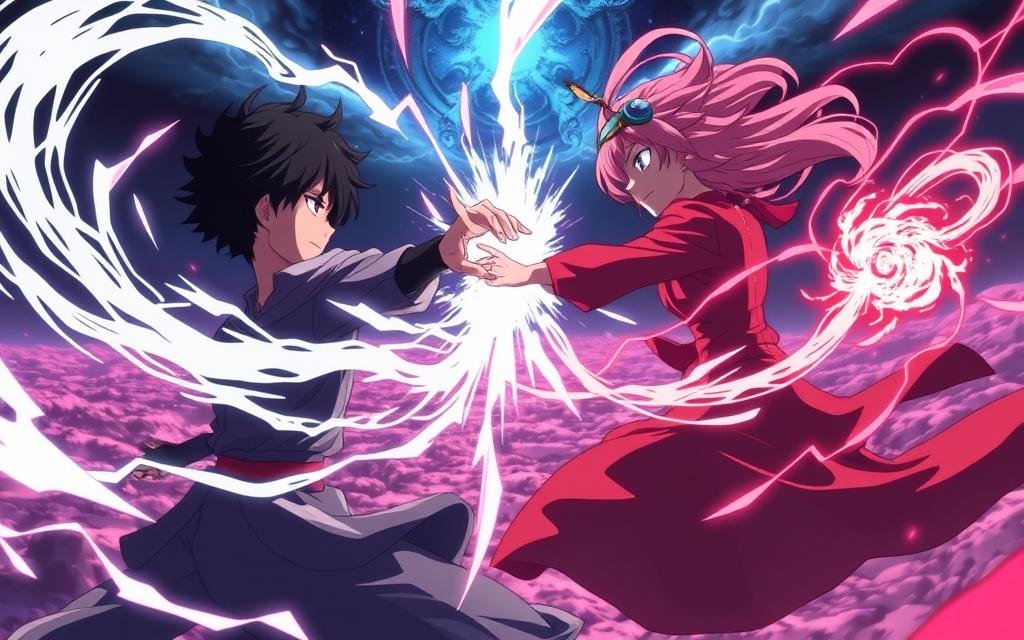
In jujutsu kaisen, many original frames served as blueprints. Directors lifted framing and timing to match the page. That fidelity made some animated scene beat-for-beat faithful to the source.
Fans worldwide turn select images into edits, colorizations, and memes. One image sparks fan art, theory threads, and watch parties overnight.
Adaptation debates follow: when an episode shifts a cut or tempo, fans argue why. Those talks sharpen appreciation for how the original work staged emotion and motion.
The same panel can gain new weight in motion. A tiny gesture becomes seismic with voice, sound, and pacing. Editors and animators rely on readable layouts to keep spatial logic intact.
“A single frame can start a cascade: trends, edits, and renewed interest in the story.”
| Role | How it helps adaptation | Fan effect |
|---|---|---|
| Framing | Guides camera placement and timing | Recreates iconic shots |
| Rhythm | Sets beat for cuts and motion | Inspires edits and theory threads |
| Emotion | Anchors voice and sound design | Deepens character resonance |
Tip: revisit our featured manga panels before rewatching episodes. Seeing the page first helps you notice the way page rhythm becomes screen rhythm and how the story expands in motion.
Conclusion
Strong, at its best a single panel can act like a thesis for a character’s arc. A quick image — Sukuna’s smirk or Yuji’s collapse — can sum story, emotion, and stakes in one moment.
Gege Akutami uses composition, negative space, and timing to turn technique into feeling. Revisiting the Culling Game and each game arc shows how rules and risk gain shape on the page.
Readers and fans should study official releases to watch shifts from close-ups to wides. Those choices map how power, cursed energy, and death move across a battle and linger long after the fight ends.
In short: these jjk manga panels travel—from page to memory to screen—and cement the series’ place in modern shonen storytelling.







